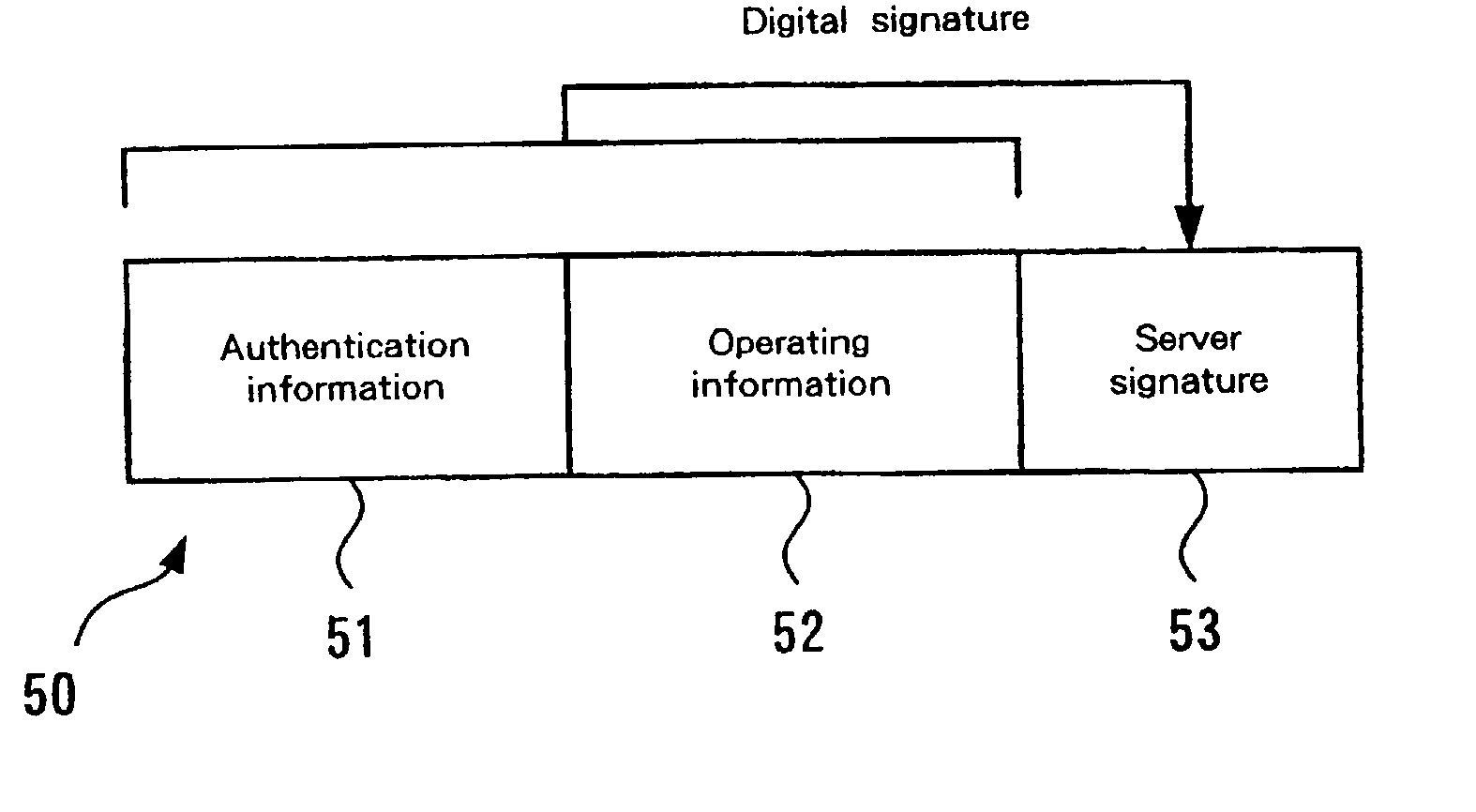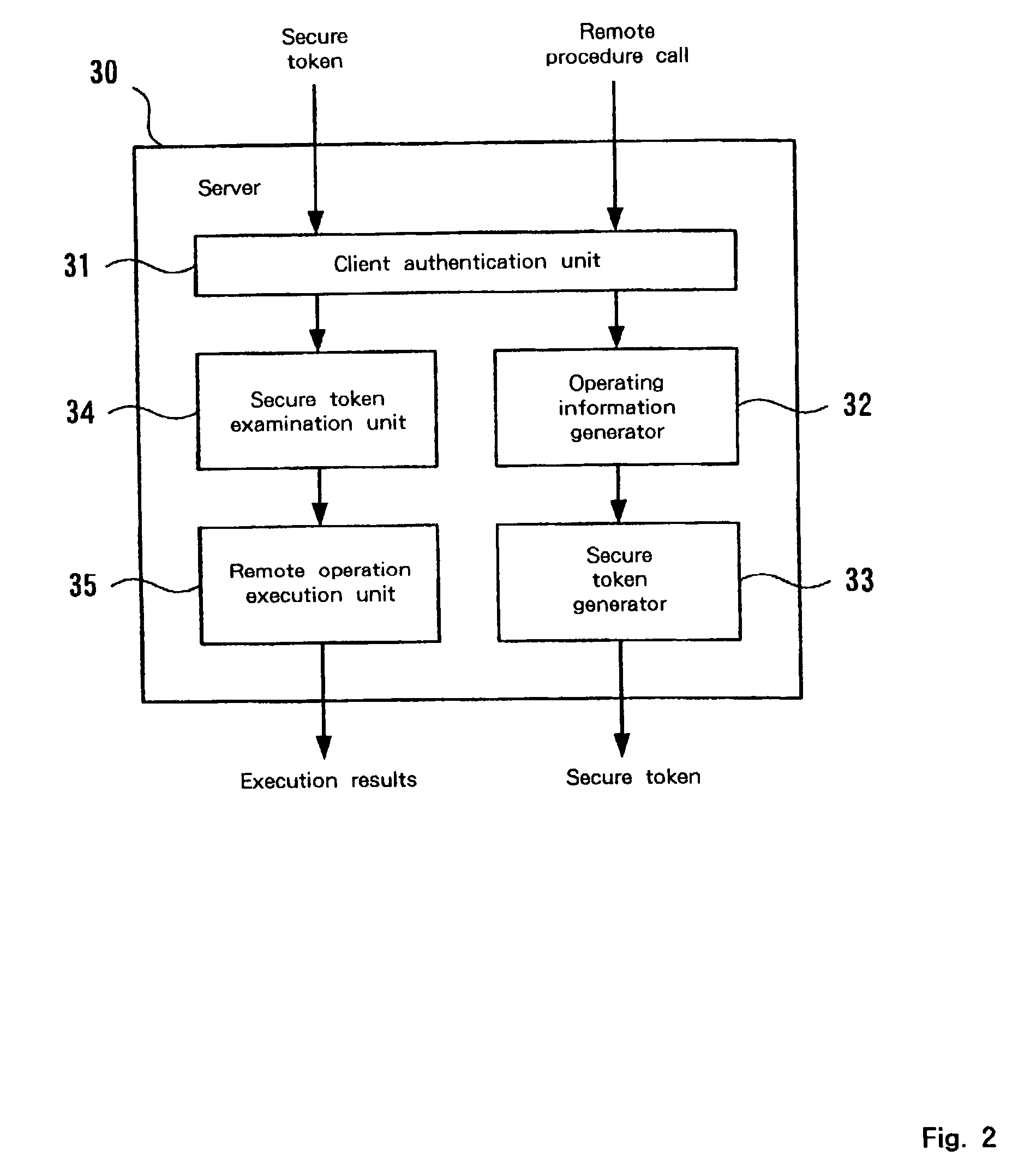System and method for access control
a technology of access control and system, applied in the direction of program control, unauthorized memory use protection, instruments, etc., can solve the problems of unspecified number, increased costs associated with the management of accumulated data, and restricted access to the resour
- Summary
- Abstract
- Description
- Claims
- Application Information
AI Technical Summary
Problems solved by technology
Method used
Image
Examples
Embodiment Construction
[0048] The preferred embodiment will now be described in detail while referring to the accompanying drawings.
[0049] FIG. 1 is a diagram for explaining the general configuration of a network system according to the embodiment whereby access control is exercised. In the network system in FIG. 1 for this embodiment, clients 10 and 20 are connected to a server 30 via a network 40.
[0050] The clients 10 and 20, and the server 30 are implemented by a computer, such as a personal computer or a workstation, by a PDA or a mobile phone having a function that enables connection to the network 40, or by another information processing terminal. In this embodiment, apparatuses capable of making remote procedure calls are defined as the clients 10 and 20, and an apparatus that performs operations in response to remote procedure calls is defined as the server 30. In FIG. 1, the client 10 and the server 30 trust each other or have a secured relationship with each other. That is, the client 10 can iss...
PUM
 Login to View More
Login to View More Abstract
Description
Claims
Application Information
 Login to View More
Login to View More - R&D
- Intellectual Property
- Life Sciences
- Materials
- Tech Scout
- Unparalleled Data Quality
- Higher Quality Content
- 60% Fewer Hallucinations
Browse by: Latest US Patents, China's latest patents, Technical Efficacy Thesaurus, Application Domain, Technology Topic, Popular Technical Reports.
© 2025 PatSnap. All rights reserved.Legal|Privacy policy|Modern Slavery Act Transparency Statement|Sitemap|About US| Contact US: help@patsnap.com



